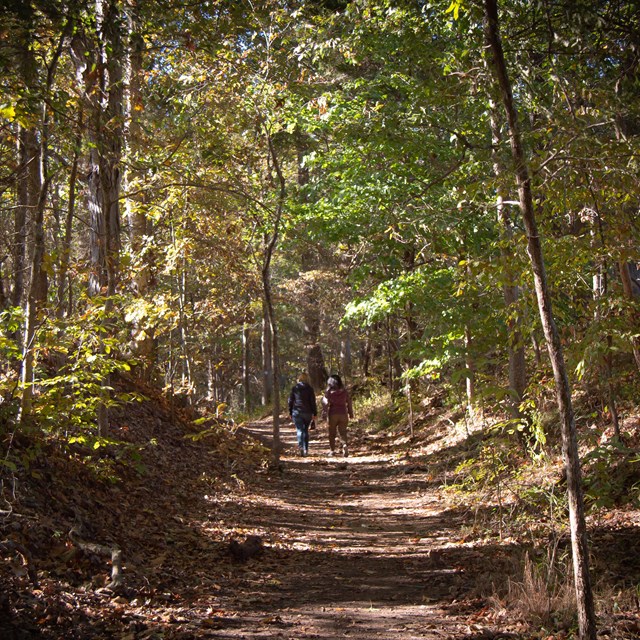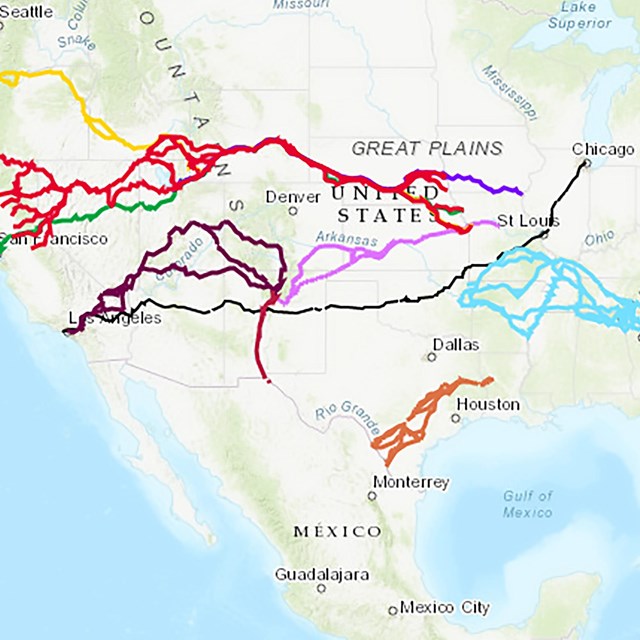Part of a series of articles titled Transportation During the Cherokee Removal 1837 - 1839.
Article
Ferries: Transportation During the Cherokee Removal 1837 - 1839

Image/Courtesy of the University of Tennessee at Chattanooga Special Collections
“For the ferriage over the Tennessee River at Savannah Tenn. of a Party of Emigrating Cherokees in a number about 6[00]-700, together with the wagons & Teams, Saddle horses & also the Agents employed in the Emigration of the Party.”
- Lt. Edward Deas, November 12, 1838
Before bridges were common, ferries played an important role in transportation as they provided conveyance over large streams and rivers. Ferry boats were most often flatboats with modifications such as sloping ramps attached to the front and back of the boat. These allowed the ferry to pull up to the bank to unload passengers and cargo directly onto the land. Although most ferries in the 1830s shared important characteristics, they were propelled across the water in a variety of ways.
In the case of a rope or cable ferry, a cord was strung across the water from bank to bank, and pulled by hand, or attached to a wheel turned by an operator, which would then pull the ferry boat across the water. This method was only practical in shallow areas where there was little to no river traffic that could get tangled in the ropes.
A swing ferry, also known as a flying ferry, was tethered to a stable point in the river by a cable or heavy rope, and used the water current and an elaborate set of pulleys to swing it from one bank to the other. Such a ferry connected Calhoun, Tennessee, to the Indian Agency at Fort Cass. U.S. Army Lt. John Phelps wrote about the ferry in his journal: “I crossed the [Hiwassee] river on a flying bridge the first I ever saw”. Cherokee detachments used at least two other swing ferries during their journeys, one each at Ross’s Landing and Savannah, Tennessee.

Images/Courtesy of City of Toronto Archives, Fonds 16, Series
Steam ferries were essentially small and less elaborate steamboats. Steam ferries posed the same danger to passengers and crew as their larger counterparts due to boilers exploding from too much pressure. Such an incident occurred when a Cherokee detachment crossed the Ohio River on Berry’s Ferry at Golconda, Illinois, scalding several people and killing two, including one Cherokee.
The danger and expense of steam power encouraged many ferrymen to use animals as a source of self-contained propulsion. Horse ferries had one of several types of wheels, such as a side-mounted paddle wheel or horizontal treadwheel, to which horses were attached, their forward movement providing the energy to propel the boat. The only horse ferry known to be used on the Trail of Tears was Green’s Ferry at Bainbridge, Missouri, which ferried some of the Cherokee detachments on the Northern Route across the Mississippi River from Illinois during the winter of 1838–1839.
Though Cherokee detachments often used ferries, they also forded rivers, as the Benge detachment did at the White River in Arkansas. An observer wrote: “It was winter … ice was frozen over along the banks of the river … Instead of their stopping to make terms to cross the river in the ferry boat, they never pretended to halt but waded across the river, women and men, all except for the few who had horses or carriages.”
The invention of the steamboat and railroads, along with vast improvements in the construction, design, and maintenance of roads and turnpikes, marked the beginning of a transportation revolution in the United States during the early 1800s. The Cherokee removal occurred as this revolution began to unfold. While the Cherokee utilized these transformative modes of transportation during their forced removal, it is important to remember that the majority traveled by foot on roads over rough terrain.
This publication was made possible by the Cooperative Ecosystem Studies Unit (CESU) Task Agreement P18AC01316 with National Trails– National Park Service and the Center for Historic Preservation at Middle Tennessee State University.
Read the Full Report
Last updated: December 21, 2021


